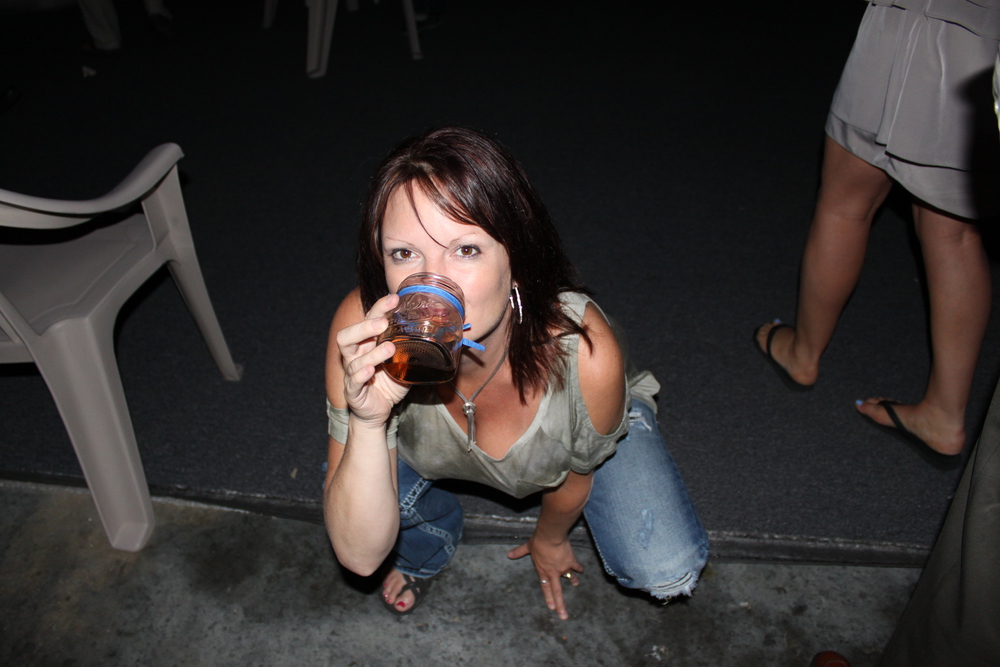Recommended Posts
Michele 1
Dr. Bordson wrote...
QuoteThere is oxygen in the lungs of the patient....just moving it past the alveoli would cause it to diffuse.
But how long would the O2 be sufficient? Wouldn't one want to get some breaths in there (slow, head positioned properly) just to make sure there is enough O2 cruising past the alveoli? Them grapes need their juice, right? And I suspect that compresson would be enough to clear the CO2, yes?
I've got to get recertified...just don't have any time at the moment.
Ciels-
Michele
~Do Angels keep the dreams we seek
While our hearts lie bleeding?~
Squeak 17
the acual act of compressing the chest will (by bellows effect) allow air in and out of the lungs during compressionQuoteCimbnjump, thanks for doing that. I am sure he appreciates it, too! A good story!
Dr. Bordson wrote...QuoteThere is oxygen in the lungs of the patient....just moving it past the alveoli would cause it to diffuse.
But how long would the O2 be sufficient? Wouldn't one want to get some breaths in there (slow, head positioned properly) just to make sure there is enough O2 cruising past the alveoli? Them grapes need their juice, right? And I suspect that compresson would be enough to clear the CO2, yes?
I've got to get recertified...just don't have any time at the moment.
Ciels-
Michele
My Life ROCKS!
How's yours doing?
xHAVOCx 0
I work on an ambulance and am also a CPR instructor.
The American Heart Association recently changed it's guidlines for the compression:ventilation ratio the middle of last year due to recent findings that there is still enough oxygenated red blood cells flowing through your body to adequately perfuse the vital organs such as the heart and brain for a longer period of time than was previously believed.
When you breath in the air in the atmosphere the partial pressure of O2 is approximately 21%. Upon expiration your body releases about 16% PO2 so we really only use 5% of the O2 that we inhale, one of the reasons CPR works. With that being said it will do no good to your patient if you are repeatedly breathing into their lungs but you are not adequately circulating the freshly oxygenated blood from the capillaries of their respiratory system to the rest of their body. It takes a minimal amount of pressure gradient for O2 to diffuse across the selective permeable membrane of the capillaries and alveoli in the lungs and only takes a matter of .25 seconds to accomplish.
Now, if you think of the extent of the cardiovascular system it is reasonable to believe that approximately half the body is still filled with partially oxygenated red blood cells that have not yet reached tiny capillaries to diffuse into the tissues of the body. The reasoning behind the precedence of compressions over ventilations is to get the oxygenated blood that is all ready in the arterial blood stream to the periphery of the body to perfuse oxygen into the vital organs like the heart and brain to prevent brain damage and myocardial infartion.
CPR protocols are not just compressions; they do start with two breaths, however, if you call 911 for an individual in full cardiopulmonary arrest, you could be instructed to give two breaths followed by 100+ compressions, some 911 protocols have completely eliminated the use of ventilations and only use compressions for full arrest patients.
I am by no means amedical authority and those who are please feel free to critisize or correct any mistakes I have made.
Hope this helps
~Z
Pronunciation: 'ha-v&k, -vik
Function: noun
1 : wide and general destruction; DEVASTATION; great confusion and disorder
pakmatt 0
bag em instead if you can
Quotehttp://www.cbc.ca/health/story/2007/03/15/cpr-breaths.html
Sounds odd but what do I know. I can't get past the idea of pumping the heart without also also giving breaths. Any med types heard of this study? I would be curious to see what someone in the know thinks of this.
Until the american heart association makes the changes to ACLS/BLS protocol changes probably won't be made. I haven't seen the study but will look into it tomorrow.
edited to add:
the change in checking for a pulse is interesting....wonder if doing cpr on someone who has a pulse will have a detrimental effect -although guess I can see why they got rid of it. The guidelines are constantly changing - i am spoiled working in the ER there is always someone there to breath while compressions are going. Airways are secured quickly.
"I am not sure what you are suppose to do with that, but I don't think it is suppose to flop around like that." ~Skootz~
I have a strong regard for the rules.......doc!
kbordson 8
QuoteQuoteThere is oxygen in the lungs of the patient....just moving it past the alveoli would cause it to diffuse.
But how long would the O2 be sufficient? Wouldn't one want to get some breaths in there (slow, head positioned properly) just to make sure there is enough O2 cruising past the alveoli? Them grapes need their juice, right? And I suspect that compresson would be enough to clear the CO2, yes?
I've got to get recertified...just don't have any time at the moment.
Ciels-
Michele
QuoteMorning Rounds
Memorandum for Dr. Karen Bordson
From: AMA Member Communications
Date: Friday, March 16, 2007
• LEADING THE NEWS • GOVERNMENT AND MEDICINE • MEDICAL-LEGAL LANDSCAPE • HEALTH COVERAGE AND ACCESS • QUALITY AND SAFETY • PUBLIC HEALTH • HEALTH AND DIET • PHARMA & DEVICE UPDATE • PRACTICE MANAGEMENT •
Leading the news
Chest compressions, not mouth-to-mouth resuscitation, save lives. USA Today (3/16, Davis) reports that, according to a study published in the Lancet, "when somebody collapses in cardiac arrest, experts now say, bystanders should not bother breathing into his or her mouth, once considered a key component of cardiopulmonary resuscitation." The study found that "twice as many of 4,241 cardiac-arrest victims who collapsed in front of others survived with good brain function if they got compressions only without mouth-to-mouth breathing." The study "confirms a controversial practice that these cities have followed for years in which they tell bystanders to perform chest compressions only to buy time until trained medical crews arrive." The study says that, "Beyond the fact that people are more likely to do chest compressions alone than in combination with mouth-to-mouth,...there are other reasons that compressions alone save lives" including the fact that "motion to circulate...blood is of more immediate importance than is providing fresh oxygen."
The Los Angeles Times (3/16, Maugh II) adds that the findings overturn "century of conventional medical wisdom" and "could have important implications in emergency medicine." But, "experts cautioned that the new rules applied only to people who collapsed suddenly from a heart attack," as "those suffering from respiratory arrest, including victims of drowning and drug overdoses, still require conventional CPR." Dr. Paul E. Pepe, head of the emergency medicine department at the University of Texas Southwestern Medical School, said, "The blood of a heart attack victim is fully oxygenated at the time of the attack, and the body uses less oxygen in the aftermath of the attack." He continued, "That supply is usually enough to last seven or eight minutes." And, "most heart attack victims gasp for air every 15 to 20 seconds," which Dr. Pepe adds, "provides substantially more oxygen than mouth-to-mouth."
Richards 0
Much of that went right over my head but I got the general idea so thanks.
Valuable time gets lost when people try to look for cloths to put over the victims mouth (when they have a blood/vomit/herpes on it) so this is why they are gonna change it to pumping.
In my last CPR class a lot of people said they wouldn't do MtoM on a victim they did not know (if the victim had blood on their mouth.)



Well, a sample size of 1 isn't very scientific, but in Dec. 2005, I - along with 2 other people - performed no-breathing CPR on a 60-something man for about 15 minutes before the cops showed up with oxygen. We continued chest compressions with the O2 for another 7 or 8 minutes before the EMTs showed up. We did have an AED and I shocked him once with that about 5 minutes into CPR and then again just as the EMTs arrived - more than 15 minutes after the first shock. The second shock restarted his breathing (and returned his heart rhythm to some semblance of normal as displayed on the EMT's EKG). We only paused the chest compressions long enough for the AED to do its analysis when it requested us to stop. The man had a large chest and it was obvious from monitoring that we were pumping air in and out of his lungs with every compression.
Just 2 weeks ago, I did my Red Cross CPR recertification. Besides the change from 15 compressions / 2 breaths to 30 compressions / 2 breaths, there was another major change to the routine - checking for a pulse is no longer done. Why? Well, a non-healthcare professional probably isn't going to find the pulse even if there is one. (That was exactly my situation when I was checking this fellow for a pulse. He had a large neck and I had no idea if he didn't have a pulse or I just couldn't find it.) You still spend 10 seconds at the start checking for "signs of life" - breathing - but if they aren't breathing the assumption is that their heart has stopped also and you begin CPR.
The guy made it. He spent only 5 days in the hospital and was back at work full time 2 months later.
Share this post
Link to post
Share on other sites